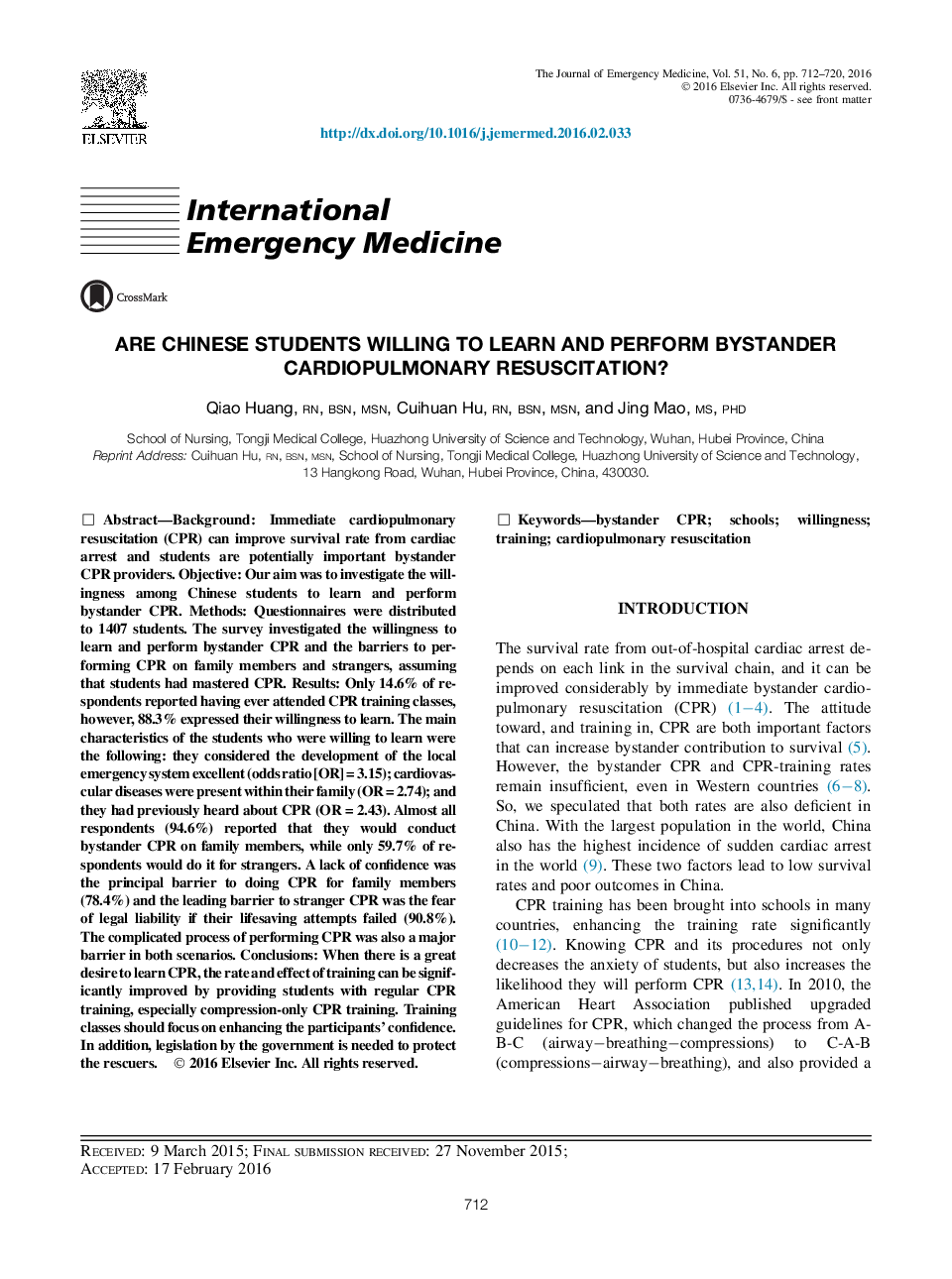| Article ID | Journal | Published Year | Pages | File Type |
|---|---|---|---|---|
| 5653521 | The Journal of Emergency Medicine | 2016 | 9 Pages |
BackgroundImmediate cardiopulmonary resuscitation (CPR) can improve survival rate from cardiac arrest and students are potentially important bystander CPR providers.ObjectiveOur aim was to investigate the willingness among Chinese students to learn and perform bystander CPR.MethodsQuestionnaires were distributed to 1407 students. The survey investigated the willingness to learn and perform bystander CPR and the barriers to performing CPR on family members and strangers, assuming that students had mastered CPR.ResultsOnly 14.6% of respondents reported having ever attended CPR training classes, however, 88.3% expressed their willingness to learn. The main characteristics of the students who were willing to learn were the following: they considered the development of the local emergency system excellent (odds ratio [OR]Â =Â 3.15); cardiovascular diseases were present within their family (ORÂ =Â 2.74); and they had previously heard about CPR (ORÂ =Â 2.43). Almost all respondents (94.6%) reported that they would conduct bystander CPR on family members, while only 59.7% of respondents would do it for strangers. A lack of confidence was the principal barrier to doing CPR for family members (78.4%) and the leading barrier to stranger CPR was the fear of legal liability if their lifesaving attempts failed (90.8%). The complicated process of performing CPR was also a major barrier in both scenarios.ConclusionsWhen there is a great desire to learn CPR, the rate and effect of training can be significantly improved by providing students with regular CPR training, especially compression-only CPR training. Training classes should focus on enhancing the participants' confidence. In addition, legislation by the government is needed to protect the rescuers.
